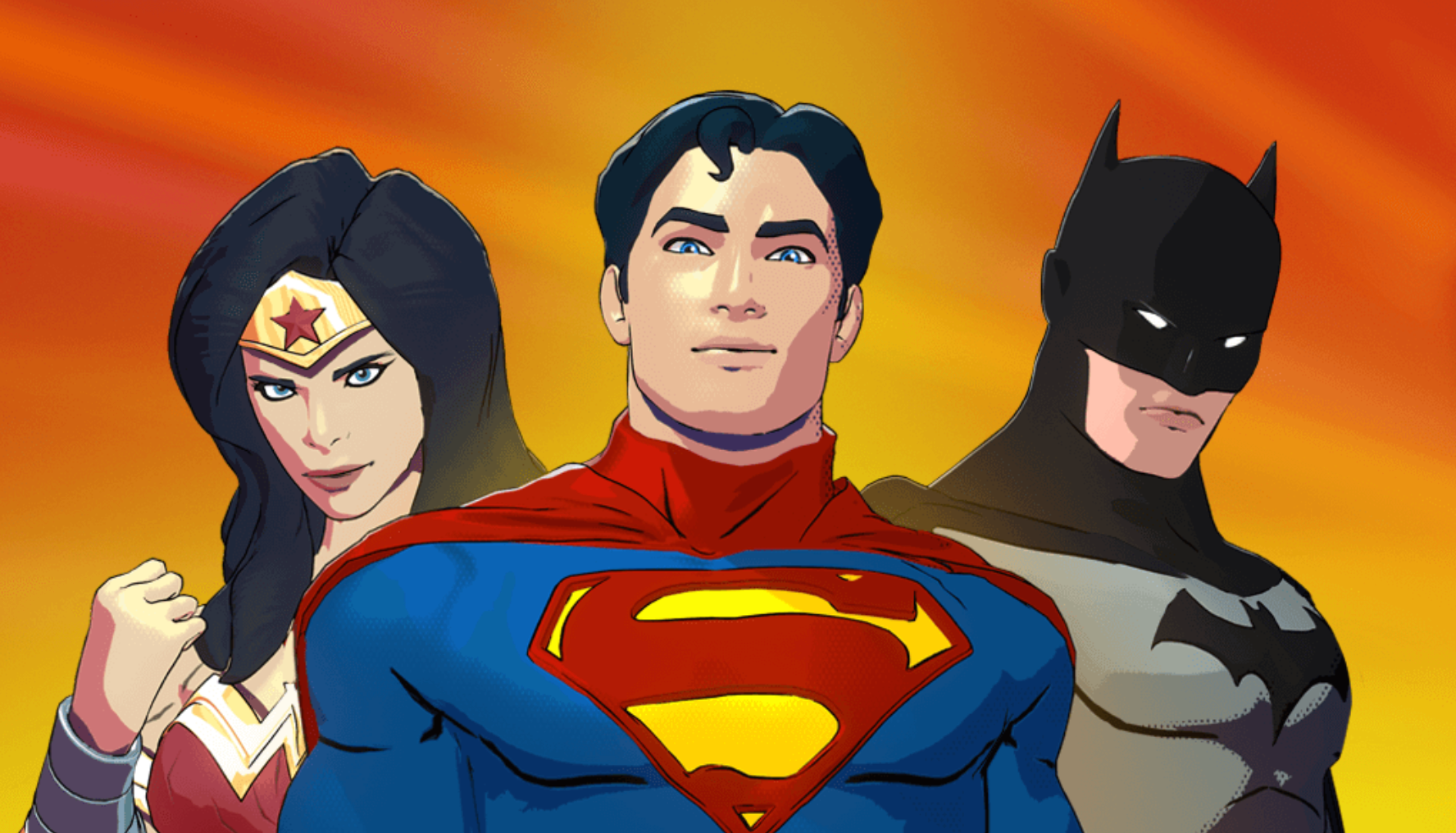Back Issues: Meet Marvel's Bad Captain America, US Agent
This week, Marvel Studios debuts its second streaming television series, The Falcon and the Winter [...]
This week, Marvel Studios debuts its second streaming television series, The Falcon and the Winter Soldier, on Disney+. The series focuses on Sam Wilson (Anthony Mackie) and Bucky Barnes (Sebastian Stan), two characters who followed in Steve Rogers' footsteps to become Captain America in the Marvel Comics Universe. But there's a third Captain America from the comics who will make his Marvel Cinematic Universe debut in The Falcon and the Winter Soldier. Wyatt Russell will play US Agent / John Walker, a character created by Mark Gruenwald and Paul Neary in 1986, seemingly for the sole purpose of answering the timeless question, "What if Captain America was terrible at being Captain America?"
Before he became Captain America, Walker first appeared in Captain America #323 as Super-Patriot. In this guise, he fought and bested Steve Rogers and made it clear that he thought Cap was over the hill and too soft for the modern era, a sign of the changing times both in comics and the real world. Walker made no distinction between America as a concept and the American government and thought Rogers was weak for compartmentalizing the two.

An army veteran given super-soldier-like abilities by the supervillain called Power Broker, Walker was a wannabe celebrity. He had been standing in line to try out for Unlimited Class Wrestling when a shady businessman, Ethan Thurm, discovered him and became his manager. Together, they developed the Super-Patriot persona and set out to outdo Captain America at his own game by taking on, or staging, heroic missions carefully curated for maximum publicity. It's easy to imagine Super-Patriot being depicted as a star-spangled social media influencer if he debuted today.
In what seemed like a moment of serendipity at the time, Super-Patriot got his moment to shine when a hawkish supervillain called Warhead pulled a flagpole sitter atop the Washington Monument with a nuclear device in hand. At that moment, Steve Rogers was being dragged before the government's Commission on Superhuman Activities and given an ultimatum: sign up to take orders directly from them or resign as Captain America. Cap gave it a day's thought and then turned in his costume and shield.
Meanwhile, Super-Patriot jumped a police barricade and scaled the Washington Monument to take out Warhead. That stunt earned him talk show appearances and headlines in the next day's papers, which got him the Commission's attention as the group searched for its replacement Cap.
That's where we get to the crux of Walker's time as Captain America. The government saw Captain America as a "franchise" and believed any properly trained, upstanding individual could do what Steve Rogers did. Walker's fall from grace would prove that isn't the case.
The Commission named Walker the new Captain America, and Walker got Lemar Hoskins, one of three "Bold Urban Commandos" who underwent the same treatment as Walker and jobbed to Super-Patriot during staged fights, installed as his new partner. Hoskins started as the new Bucky but rechristened himself Battlestar before his public debut. After conducting background checks, the Commission sent Walker's other two "Buckies" and Thurm away. They went independent as became the duo called Right-Winger and Left-Winger.
Though he put in extra hours into studying Captain America's battle footage to get his shield-wielding fighting style down, Walker couldn't have been more different from Rogers's personality and mindset. Rogers stood on principles, saw a difference between morality and legality, American ideals and the American government, and tried to stay out of partisan political debates. Walker was the type to do anything to get the job done, saw patriotism and government loyalty as the same, and often wore his political views on his sleeve.
Walker wasn't in the field long before the stress of being the new Cap got to him. His first mission tested him by sending him to his hometown in Georgia to root out a homegrown terrorist group called the Watchdogs. He has to deal with learning that folks he grew up with were involved in terrorism while himself feeling conflicted because he was sympathetic to the Watchdog's conservative worldview (described as being "against pornography, sex education, abortion, the teaching of evolution"). Then, he allowed Hoskins, a Black man, to be lynched rather than blow his cover (Hoskins survived thanks to his superhumanly enhanced neck muscles).
Then, on a mission to retrieve escaped villain Professor Power, Walker lost his cool and beat the criminal to death. The Commission was willing to consider this incident an acceptable loss since their orders were to "neutralize" the target. Things worsened when Right-Winger and Left-Winger crashed the press event where the Commission was to introduce the new Captain America officially. Walker's bitter former friends revealed his secret identity to the public, leading the Watchdogs to the home of Walker's parents. Walker tried to rescue his folks but failed in the attempt. The Watchdogs killed his parents, and Walker left nine Watchdogs dead in his rage.
At that point, there was no pulling Walker out of his descent. He unloaded on the mutant group called the Resistors and then began hunting down Right-Winger and Left-Winger. When he found them, he strung them up and set them on fire. The Commission was finally ready to retire Walker when the terrorist Flag-Smasher, threatening hostages, demanded to see Captain America. With no one else to send, the Commission put Walker back into the field, but Flag-Smasher recognized he wasn't the original Cap. After besting Walker in a fight, he took the new Cap hostage.
Left with no other choice, Battlestar went rogue and found the original Cap, now operating through a loophole in his agreement with the Commission as the red, white, and black-clad hero The Captain. Together, they rescued Walker, whose pride was severely damaged.
That's when Steve Rogers uncovered the truth of the situation. Walker's ascent as Captain America wasn't the result of simply being in the right place at the right time. Captain America's archenemy, the Red Skull, had somehow resurrected in a body cloned from Steve Rogers and orchestrated all of Walker's misery. Red Skull ensured that the already tempestuous Walker became Captain America and then purposely drove him over the edge -- funding the Watchdogs, Flag-Smasher's ULTIMATUM group, the Resistors, and other villains while also being the shadowy figure pulling the Commission chairman's strings -- all to sully the Captain America legacy. He then goaded Walker and Rogers into a fight, which Rogers won. With his time as Captain America coming to an end, Walker's last act in the role was convincing Rogers to take back the mantle instead of letting the Commission find another substitute.
You might think Walker would find himself behind bars after killing about a dozen people. Instead, the Commission faked Walker's death. Then hypnotized him into forgetting who he was and supplied him with a new identity. He returned to duty wearing Rogers' discarded black uniform using the name US Agent, acting on the Commission's behalf without the public pressure of being Captain America. Eventually, Walker remembers who he was and discovers that his manipulation goes back even further than the Red Skull. He discovers that his brother Mike, whose death in Vietnam inspired Walker towards patriotic service, was an elaborate fabrication meant to get Walker to join the Scourge of the Underworld, a group of violent vigilantes.
Walker eventually joined the West Coast Avengers, acting as the liaison between the team and the Commission. His role, as well as his attitude, created friction with the other heroes. In the 1990s, when violent and unstable heroes were in vogue, Marvel gave US Agent his first solo miniseries. He remained Marvel's edgy ersatz Captain America until the West Coast Avengers disbanded. He then began years of stories where he tried to step out of Captain America's shadow by changing his costume (Marvel even once had him dressed like Judge Dredd) before eventually returning to his classic look and role.
But the saga of the replacement Captain America and "The Captain" remains the essential John Walker story, and he's never really been able to grow out of the role of Captain America's unworthy replacement. After all, that's what his creators intended him to be, both through Red Skull's in-narrative machinations and by his real-world progenitors. Gruenwald told Amazing Heroes in 1988 that he created Walker, a "Rambo-ized" version of Captain America, to "better define what Captain America the concept is by seeing someone groping, trying to live up to it, trying to grasp all the facets of the concept." Like many other replacement characters of the late '80s and early '90s, Walker's role wasn't really to redefine Captain America for the grittier, modern era. Instead, it was to show why such reinvention is utterly unpalatable when applied to a classic Golden and Silver Age icon and, through his failure, reinforce the original's greatness.
Walker also made it clear that Captain America's legacy isn't something that just anyone is capable of carrying. Considering that struggle is precisely the one Sam Wilson faces in the Marvel Cinematic Universe, it's clear why Walker has a role to play in The Falcon and the Winter Soldier.
The Falcon and the Winter Soldier debuts on Disney+ beginning Friday, March 19th.
Want to learn more about the latest Marvel Studios series? Check back on ComicBook CRAM every day leading up to the premiere of The Falcon and the Winter Soldier, and click here for even more articles and videos to find out everything you need to know about the new show!
If you haven't signed up for Disney+ yet, you can try it out here. Note: If you purchase one of the awesome, independently chosen products featured here, we may earn a small commission from the retailer. Thank you for your support.




